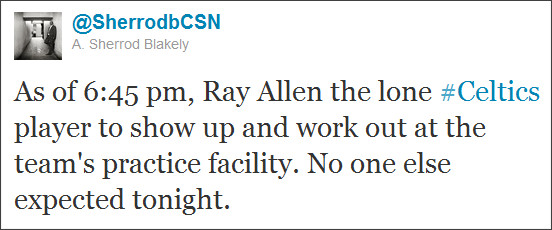Earlier this week, I looked at Enes Kanter’s numbers and how the Thunder traded up for offense while trading down defensively. The numbers showed that Kanter was a detractor to the Thunder’s overall plus/minus ranking by a margin of over 3.5 points when he is on the court as opposed to when he is on the bench. I wasn’t satisfied with the numbers that I found, so here is the follow up to help clarify.
The current Oklahoma City Thunder center sent some barbed comments at his former team last week, and some of his ex-teammates returned the favor – after handing him a loss. The comments focused around the defensive ability that Kanter lacks. This isn’t a secret; Kanter has a reputation in basketball circles for being a leak on defense. By total accident, I changed the way I looked at some of Kanter’s numbers this week, after the last piece I wrote, and found two things that might better explain, or demonstrate Kanter’s defensive liability.
The first stat at which I looked, and should have considered originally, was rim protection. The basic rim protection numbers show just how hard, or easy, it is to work in the restricted area against bigs. Beyond these numbers, the good dudes over at Nylon Calculus developed a more advanced points saved metric based on rim protection numbers.
In rim protection, Enes Kanter is one of the worst measured big men in the league. In 49 games this season with Utah, Kanter allowed an Opponent Field Goal percentage of 57.3, which is not good. To give some scope, compare that number to former teammate and current Jazz center, Rudy Gobert, who allows an insanely low 39.1 Opp FG percentage over the course of 75 games. What happens when we look at Kanter’s numbers with the Thunder? Something extremely similar, of which plus/minus wasn’t a particularly great indicator when looking at various contributions. Since joining OKC, Kanter has an Opp FG percentage of 57.5 in 20 games, which is very consistent and appears not to be a sample aberration or outlier since it is nearly an exact match to his numbers of 49 games with Utah.
Current Thunder teammate Serge Ibaka was someone at which we wanted to look to see how he might be protecting or hiding Kanter’s poor defense to justify his offensive contribution. The numbers didn’t really clear that up for us, at least not from the angle that I used. Rim protection changes that quickly. Ibaka has an Opp FG percentage of 40.8 percent over 64 games, nearly the same as what Gobert is offering Utah. The nice thing for the Thunder is that unlike Gobert, Ibaka plays a different position than Kanter so they would seem to be a natural combination to compliment areas that the Thunder needed to improve on when both players are on the court.
Since Ibaka has been injured, the combination of Kanter and fellow center Steven Adams has been employed by Thunder coach Scott Brooks for more than 20 minutes per game. Adams is not as stout of a rim protector as Ibaka, with an Opp FG percentage of 48.1 over 64 games, but does offer size and a much better defensive presence allowing Kanter to stay on the court for his offensive contribution.
Kanter’s offensive contribution does have a role to play in this as well. While the numbers did clearly point to the Thunder having a more favorable plus/minus when Kanter sits, it wasn’t extremely convincing when it stood alone. There is a way to possibly explain this which is actually quite simple. Kanter was brought to OKC for his offensive contribution and he is doing just that – contributing on offense at a higher rate than in Utah. Since coming to Oklahoma City, Kanter is averaging a full 4.5 points more per game – yes, PER GAME. That’s a tremendous improvement over what he was doing in Utah and the small sample size of 20 games with OKC is actually a career-high total – a full six points higher than his previous best. Kanter should be recognized for his fantastic offensive contribution, in spite of his bridge-burning mouth. On defense, we now have a better picture of just how bad he was performing compared to other players at the center position.
Nylon Calculus uses an advanced system to derive points saved per game or per 36 minutes. The points saved per 36 minutes metric might be the better to use for a number of reasons so let’s take a look at those numbers. In this category, Rudy Gobert, current Jazz center, ranks second in the league behind only Andrew Bogut. Gobert’s points saved per 36 minutes stands at 3.27, six spots behind him on the list is OKC’s Serge Ibaka at 1.91. If we go further down the list, we have Steven Adams at 0.46, not nearly as well as Ibaka or Gobert, but still ahead of Kanter. Interestingly, and perhaps embarrassingly for Kanter, a player that was perceived as dead weight and was actually used as trade fodder to bring him to OKC was Kendrick Perkins who has a per 36 points saved of 0.40. Still, no sign of Kanter. Eventually, you can scroll to the bottom-third of all players used in this calculation and find Kanter, -1.87. The difference between Kanter and ex-teammate Gobert is a whopping 5.14 points per game, and the difference between Kanter and current, injured teammate Ibaka is 3.78.
I think these numbers more clearly define the Kanter problem and compliment that piece from earlier in the week. While Kanter is scoring at a career-best 18.3 points per game in OKC, he is still a defensive wasteland and offers no protection at the rim.
Add The Sports Daily to your Google News Feed!
